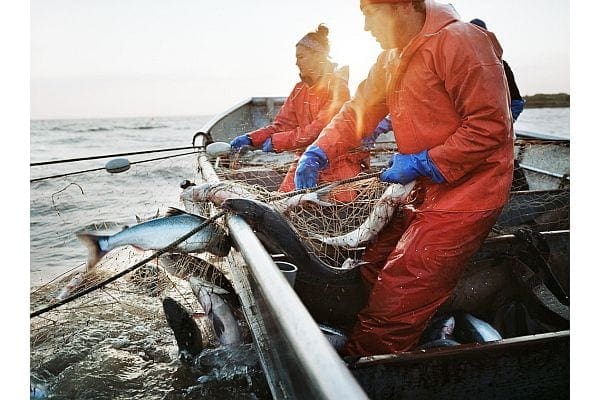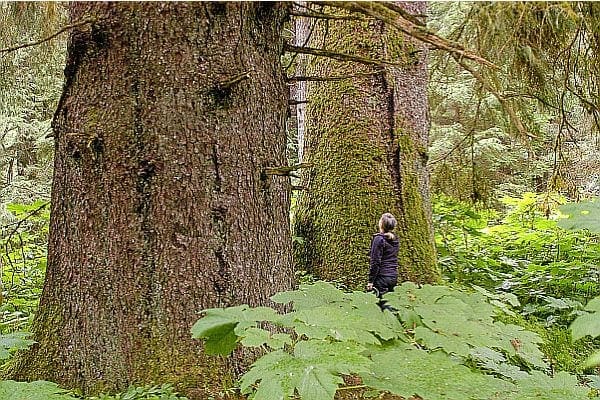Alaska’s Bristol Bay and Tongass are ideal beginnings for 30×30

JUNEAU— SalmonState is excited to see the release of the Biden Administration’s initial report on the potential of the 30×30 initiative — a bold and necessary effort to protect 30% of America’s lands and waters by 2030. While there are multiple ways to reach these goals, two landscapes in Alaska offer a critical mass of support for 30×30-scale protections: Bristol Bay and the Tongass National Forest. Protecting Bristol Bay and the Tongass will provide huge positive impact now and light the way for successful efforts elsewhere.
“If we want to make 30×30 real and have it resonate with the public, we should protect places that the public cares about. Bristol Bay and the Tongass National Forest are two such places. The jobs, the fish and wildlife and the cultural riches they sustain should make them top of the list, immediate priority areas for the Administration,” said SalmonState Executive Director Tim Bristol.
These two regions represent the two most important salmon-producing landscapes in America, birthing hundreds of millions of salmon annually and feeding everything from orcas to brown bears to people. The salmon of Bristol Bay and the Tongass connect some of the nation’s wildest lands to the ultra-productive North Pacific Ocean through their life cycle. In turn, the harvest of those salmon creates tens of thousands of jobs and generates billions of dollars in annual economic activity.
These magnificent landscapes provide tremendous carbon storage and resiliency benefits and serve as the traditional homelands of dozens of federally recognized Alaska Native tribes. The Tongass, for example, represents 44 percent of all the carbon storage on US national forests and Bristol Bay provides nearly 60 percent of the world’s wild sockeye salmon supply. Protection requests from a wildly diverse set of Tribal, business, community and NGO stakeholders are already in front of the Administration. Specifically, the reinstatement of the Roadless Area Conservation Rule for the Tongass and reestablishment of Clean Water Act protections for the headwaters of Bristol Bay await action by the Biden Administration and would lead to real, on-the-ground success, breathing life into 30×30 and making it real and positive for Americans from across the political spectrum.
SalmonState calls upon the Administration to take action now to protect two of the nation’s wildest and productive landscapes and make 30×30 an initiative that provides real impact and positive benefit to America and Americans. There is no better place to start than in Alaska’s Bristol Bay and Tongass.
See below for information why Alaska Bristol Bay and Tongass represent such an incredible opportunity.
Bristol Bay is home to one of the most valuable commercial fisheries in the world, as well as vibrant sport fishing, hunting, tourism, and recreation industry. Bristol Bay is threatened by the proposed colossal open pit Pebble Mine, which puts thousands of American jobs at risk and endangers the health of deep-rooted Alaskan industries. Clean Water Act protection put in place during the Obama Administration must be reinstated to protect one of the Nations’ most amazing and productive landscapes and the traditional homeland of the three dozen Alaska Native Tribes.
- $2.2 billion annual commercial fishery
- $90 million in Alaska state taxes and licensing fees
- 15,000 fishing jobs
- 7,000 sport fishing and hunting jobs
- Thousands of full and part-time tourism and recreation jobs
- Nearly 60% of the world’s wild sockeye salmon harvest
- Average annual return of more than 50 million wild salmon
- One of the most prolific king salmon runs on Earth
- Internationally renowned salmon sportfishing destination
- Supports the world’s highest concentration of brown bears, which depend on the bay’s abundant salmon runs to survive
- Home to over 20 million acres of wetlands, lakes, and streams critical for salmon spawning
At 17 million acres, the Tongass is America’s largest national forest and the largest intact temperate rainforest on the planet. It is an enormous carbon reservoir and salmon producer, and supports thousands of jobs. In 2001, following a process involving millions of comments and the collapse of the clearcut timber industry, the Roadless Rule protected 9 million acres of the forest from logging roads, while still allowing community interties, hydropower, and other approved uses. In 2020, however, against the will of Tongass residents, Tribes and Americans, the Trump Administration stripped those protections, opening up that land for clearcut old growth logging and industrialization. The Roadless Rule must be restored in order to defend some of the world’s last remaining old growth temperate rainforest, as well as the jobs, traditional lifestyles, and wildlife those ecosystems support.
- The Tongass stores 44% of the carbon stored in all U.S. national forests.
- The stripping of Roadless protections opens up 186,000 acres of some of the largest, oldest trees for clearcut logging. Those trees are the most valuable habitat — and they store and absorb the most carbon. Only 3% of the Tongass is large tree old growth.
- The intact Tongass supports the $2 billion commercial fishing and tourism industries
- 26 percent of Southeast Alaska’s annual employment (commercial fishing and tourism) is supported by the intact forest.
- The Tongass attracts more than 100,000 recreational anglers and more than 1 million visitors on average each year.
- The Tongass contains more than 5,000 salmon streams. Those streams and lakes birth 25 percent of the West Coast’s annual salmon catch. More than 50 million wild salmon are born in the Tongass each year.
- The Tongass has some of the densest concentrations of brown bears in the world. Old growth is essential habitat for them, for Sitka blacktail deer, for all five species of Alaska salmon, and for many other species.
- Southeast Alaskans overwhelmingly support the Roadless Rule. More than 90% of local subsistence testimony was in favor of the Roadless Rule. All six Southeast Alaska Tribes that had been participating in the Trump Administration’s Alaska Rulemaking process as cooperating agencies withdrew in protest over the way their valuable feedback was disregarded and disrespected.
- 95% of American testimony was in favor of maintaining protections.
SalmonState works to keep Alaska a place wild salmon and the people who depend on them thrive.

